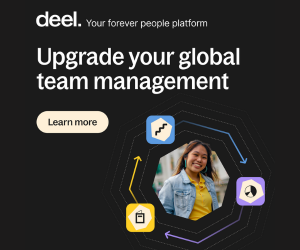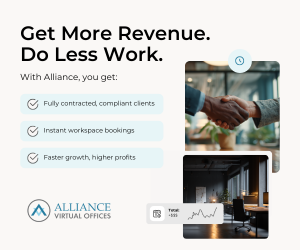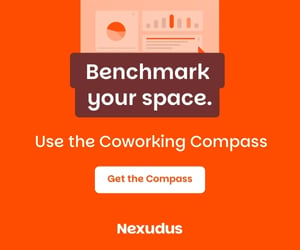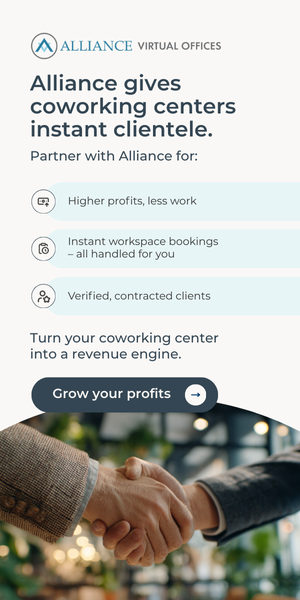- Using design software, AI, and creative tools significantly increases job seekers’ chances of landing interviews.
- Hiring managers are increasingly drawn to visually engaging resumes and online portfolios, showcasing creativity and personality.
- A strong online presence helps job seekers stand out, with platforms like LinkedIn offering a key advantage in connecting with hiring managers.
When you’re on the hunt for a job, standing out from the crowd is everything.
A new study from Canva highlights a simple but powerful insight on how to do it: 96% of job seekers who use AI in their application materials get called back for interviews.
That’s a staggering success rate, and it reveals that embracing modern tools can be a game-changer in your job search.
Canva’s 2025 “New Year, New Job Report” explains how job seekers are using technology and creativity to get noticed by hiring managers. With insights from 10,000 hiring managers and job seekers worldwide, the findings suggest that those who use visuals, online platforms, and digital design are not only more likely to stand out — they’re more likely to get hired.
The 96% Advantage is Why Digital Tools Matter
Why are so many candidates finding success by incorporating digital tools into their applications? The answer is simple: hiring managers are looking for something more than a plain resume.
When job seekers bring creativity into the mix — whether through visually appealing resumes, portfolios, or even social media profiles — they’re giving employers more to connect with.
That feeling of connection is incredibly powerful as data show 96% of job seekers who use tools like design software and AI to enhance their application materials receive interview callbacks.
That’s so high that Allwork.Space asked Lorraine Dooley, Talent Acquisition Lead at Canva, about it to dig more into the why behind the results.
Allwork.Space: 96% is an extremely high number; do you think job seekers have started using AI in their resumes due to high competition, or because they know resumes are now screened with AI, so they’re trying to keep up?
Lorraine Dooley: The job market today is certainly more competitive than ever, and the application process requires a lot of effort from both job seekers and employers. AI tools can enhance resumes by optimizing language, formatting, and highlighting key skills, giving applicants a better chance of standing out in a crowded field.
I believe more people are embracing this as a tool to improve their applications because it helps them overcome key blockers in the process — either the dreaded blank page, when they have to create a resume or cover letter from scratch — or providing an instant second opinion, rather than trying to outsource feedback to a peer.
Allwork.Space: Is this ethical? Will less qualified people be chosen for roles because AI made up for their professional shortcomings, possibly?
Lorraine Dooley: The role of AI in the hiring process is certainly nuanced, and transparency is key. AI is a tool to help you create standout materials, but shouldn’t be used to misrepresent skills or abilities.
73% of hiring managers believe candidates should disclose generative AI use in application materials
In fact, 73% of hiring managers believe candidates should disclose generative AI use in application materials, per our New Year New Job report.
AI should be a thought partner in helping people highlight their real skills or add additional polish to an otherwise plain resume or portfolio. It’s crucial that candidates refine any materials they generate with AI, and ensure their application represents their true voice and skills.
The rise of AI really underscores the continued need for human oversight in the recruitment process — talent teams and hiring managers have a duty to dig deep to uncover candidates’ skills, values and motivations. AI won’t replace the importance of human interactions in assessing a person’s potential.
At the same time, there’s a valid worry that some candidates, especially those without a lot of resources or tech skills, might get left behind in an AI-driven job market landscape. To tackle this, AI platforms have a responsibility to make their tools accessible. For example, at Canva, we aim to make design accessible by offering AI tools that are user-friendly, intuitive, and come at no additional cost. We also provide templates to help people create impressive resumes and portfolios, no matter their experience level.
Interactive Resumes and Portfolios Are The New Norm
So, what does a “digital upgrade” look like? For many job seekers, it means moving away from static resumes and embracing interactive features. 65% of hiring managers now prefer resumes with interactive elements like clickable links, videos, or embedded portfolios.
Resumes that are visually engaging — and show a bit of creativity — are more likely to catch a hiring manager’s eye.
In addition, 72% of employers say they prefer candidates who present a portfolio showcasing their work online. Yet, only 35% of job seekers actually use portfolios. If you’re not including a portfolio or a link to your work, you might be missing a huge opportunity to stand out.
Beyond resumes and portfolios, 50% of hiring managers also like video cover letters, which allow candidates to show off their communication skills and personality in a more dynamic way.
These formats are becoming increasingly popular, especially for younger job seekers, and they represent the future of the job application process.
The Social Media Edge in Building Your Personal Brand
Today, your online presence is as important as your resume. 94% of hiring managers say they value candidates who maintain a strong social media presence relevant to their career.
Whether it’s LinkedIn, Twitter, or Instagram, your online presence gives hiring managers a deeper insight into your skills, expertise, and professional interests.
Job seekers are also starting to leverage social media to build their personal brand. 88% of job seekers now believe that a strong digital professional brand increases their chances of landing a job, nearly double the number from last year.
Social platforms are not just for networking — they’re a way to promote your expertise, share industry insights, and even directly connect with hiring managers.
The power of social media in job hunting is undeniable, especially with 80% of job seekers using platforms like LinkedIn, Facebook, and Instagram to search for jobs.
This trend is especially strong among Gen Z, with 88% of Gen Z job seekers using social media to find job opportunities.
Getting the Job is About More Than Just the Resume
The idea that a resume is the only tool in the job-seeking toolbox is outdated. Digital tools, including AI, design platforms, and social media, allow you to present yourself in the best possible light and connect with hiring managers in ways that weren’t possible before.
In fact, the growing preference for interactive and visual elements in resumes and portfolios means that job seekers who don’t embrace these tools may be missing out on key opportunities.


 Dr. Gleb Tsipursky – The Office Whisperer
Dr. Gleb Tsipursky – The Office Whisperer Nirit Cohen – WorkFutures
Nirit Cohen – WorkFutures Angela Howard – Culture Expert
Angela Howard – Culture Expert Drew Jones – Design & Innovation
Drew Jones – Design & Innovation Jonathan Price – CRE & Flex Expert
Jonathan Price – CRE & Flex Expert














